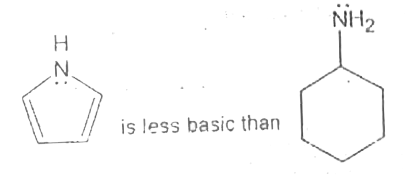Statement -1 : The innermost layer of microsporangium is tapetum.
Statement -2 : Glandular tapetum provides nourishment to developing microspores.
Only statement -1 is correct .
Only statement -2 is correct
Both statement 1 & 2 is correct
Both statement 1 & 2 is incorrect.
The correct Answer is:C
To solve the question, we need to analyze the two statements provided:
Statement 1: The innermost layer of microsporangium is tapetum.
Statement 2: Glandular tapetum provides nourishment to developing microspores.
1. Understanding Microsporangium Structure:
- The microsporangium, also known as the pollen sac, is where pollen grains develop.
- It consists of several layers, including an outer wall and a central tissue known as sporogenous tissue.
2. Identifying the Layers of Microsporangium:
- The wall of the microsporangium is made up of four layers:
- Epidermis (outermost layer)
- Endothelium (second layer)
- Middle layers (one to three layers)
- Tapetum (innermost layer)
3. Evaluating Statement 1:
- Since the tapetum is indeed the innermost layer of the microsporangium, Statement 1 is correct.
4. Understanding the Function of Tapetum:
- The tapetum is a nutritive tissue that provides essential nutrients to the developing microspores (pollen grains).
- There are two types of tapetum: glandular and fibrous. The glandular tapetum is specifically known for its role in nourishing the developing microspores.
5. Evaluating Statement 2:
- Since the glandular tapetum does provide nourishment to the developing microspores, Statement 2 is also correct.
6. Conclusion:
- Both statements are correct. Therefore, the correct option is that both Statement 1 and Statement 2 are correct.
Final Answer:
Option 3: Both Statement 1 and 2 are correct.
Statement 2: Glandular tapetum provides nourishment to developing microspores.
- The microsporangium, also known as the pollen sac, is where pollen grains develop.
- It consists of several layers, including an outer wall and a central tissue known as sporogenous tissue.
- The wall of the microsporangium is made up of four layers:
- Epidermis (outermost layer)
- Endothelium (second layer)
- Middle layers (one to three layers)
- Tapetum (innermost layer)
- Since the tapetum is indeed the innermost layer of the microsporangium, Statement 1 is correct.
- The tapetum is a nutritive tissue that provides essential nutrients to the developing microspores (pollen grains).
- There are two types of tapetum: glandular and fibrous. The glandular tapetum is specifically known for its role in nourishing the developing microspores.
- Since the glandular tapetum does provide nourishment to the developing microspores, Statement 2 is also correct.
- Both statements are correct. Therefore, the correct option is that both Statement 1 and Statement 2 are correct.
Option 3: Both Statement 1 and 2 are correct.
Similar Questions
Statement-1:

Statement-2:
View SolutionThe function of innermost layer of pollen sac, tapetum is
View SolutionThe innermost wall layer of microsporangia which provides nutrition to the developing pollen grain is
View SolutionAssertion :- Inner most layer of microsporangium or pollen sac, tapetum is of physiological significance.
Reason :- All kind of nutrition of developing pollen grains go through tapetum.
View SolutionInnermost layer ___________, provides nourishment to the pollen grains.
View SolutionRead the given statements . A. Leydig cells are located in interstitial spaces in testes B. Sertoli cells of seminiferous tubules provide nourishment to developing sperms. Select the correct option .
View SolutionRead the following statements: Statements-1: Viviparous organisms give birth to their young ones. Statement-2: In viviparous organisms embryo gets nourishment from yolk. Choose the correct option.
View SolutionStatement-1:The coordination number of a cation present in an O void is 6
Statement-2:O-voids are formed due to overlapping of two trigonal voids of adjacent layers.
View SolutionSelect the incorrect statement w.r.t tapetum. (a) Cells of tapetum are polyploid. (b) Amoeboid tapetum provides ubisch bodies which helps in ornamentation of exine. (C) Tapetal cells show increase in their DNA content. (d) Innermost layer of anther surrounds the sporogenous tissue. (e) Glandular tapetum secretes sporopollenin, pollenkit and compatibility proteins
View SolutionThe innermost layer of anther wall whose cells nourish the developing pollen grains is
View Solution
